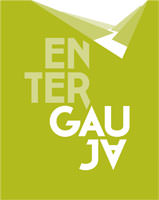
- Enter Gauja
- Things to do
- News & Events
- News
- Events
-
Latest events
01 Nov -
09 NovCēsis County Autumn Restaurant Week 2025 »
- Eat & Drink
- Accommodation
- E-shop
Fast-forward to now, and visitors can now drift the same corridor by kayak, tracing sandstone cliffs the flood carved, sneaking past beaver lodges and medieval castles, and picturing that ancient chocolate-milk torrent roaring overhead while today’s Gauja murmurs gently beneath your paddle.
This magnificent river is a mecca for one of Europe’s great water-sport experiences.
Mist lifts off brown water (due to the Devonshire red sandstone riverbed) as if the Gauja itself were stretching after a long night’s sleep. In some places on both banks rusty-red sandstone cliffs loom five floor high;
The length of the Gauja 460 km and is Latvia’s longest river and the only major one born and buried inside the country’s borders. Almost one-fifth of that length, about 93.5 km, meanders through the 918 km² of Gauja National Park, a fault-line valley up to 2.5 km wide and 85 m deep near Sigulda. Unlike steeper Alpine torrents, the Gauja averages a gentle 71 m³/s discharge, yet spring melt triples the volume to 183 m³/s, briefly turning the river into a living treadmill for white-water fans.
Its tributaries: Brasla, Amata, Ligatne, and dozens of creeks—add rapids and create a fun boating experience. They also offer the chance to explore new rivers while always finishing in the Gauja River.
Spring (late March–May). Snowmelt swells every bend, flooding meadows and smoothing out shallows. This is the only period when the Amata (Latvia’s fastest river) reaches class II–III; locals joke that once the gauge at Melturi Bridge hits 1.30 m, half of Riga phones in sick and drives east.
Summer (June–August). Levels stabilise and beaches emerge. 20-hour daylight lets you linger under every cliff overhang. Expect families in open canoes between Cēsis and Līgatne, but even in July you can find solitude by starting at dawn.
Autumn (September–mid-October). Birch forests ignite in gold, the first stags bellow in side valleys and crowds thin. Water is cooler yet still welcoming in a neoprene top.
Winter. Sections above Valmiera freeze; lower reaches remain ice-free thanks to numerous springs, making pack-rafting or seal-launching possible for the hard-core, but daylight is short and campfires are banned within 50 m of the riverbank inside the park.
|
Route |
Distance & Time |
Character |
Put-in / Take-out |
Best for |
|
Cēsis → Līgatne Bend Cruise |
20 km/ 4–5 h |
Flat water, sandstone banks, occasional beaches and forests |
Under the Cēsis Castle ramparts / Līgatne ferry |
Beginners, photographers |
|
Līgatne → Sigulda Canyon |
34 km/ 6–8 h |
Gentle current, 5 riffles, 60 m cliff faces |
Līgatne ferry / Sigulda cable-car pier |
Day-trippers wanting wow-factor |
|
Brasla Tributary Quest |
25 km Brasla +15 km Gauja / 8 h |
Narrow forest river, beaver dams, small weirs |
Mārkulīči campsite / Sigulda |
Bird-watchers, micro-adventurers |
|
Amata Spring Dash |
10 km / 2–3 h (only Apr) |
Class II–III rapids, boulder gardens |
Amata Nature Trail car park / Līgatne |
White-water addicts with helmets |
|
Carnikava Delta Finale |
18 km / 3-4 h |
Brackish estuary, coastal dunes |
Ādaži bridge / Baltic Sea pier |
Final chapter of multi-day trips |
Cēsis → Līgatne Boating Cruise
Within minutes, you glide past Ērgļu Cliffs, a 700-metre ochre wave of sandstone rising 22 metres above the Gauja River. Kingfishers dart between willow roots, while beavers leave pencil-sharpened trunks on shingle bars
Līgatne → Sigulda
Ķūķu Cliffs (43 m) and Velnala (“Devil’s”) Cave guard bends where the river abruptly narrows, quickening to 6 km/h. A final right-hand curve reveals the red-brick towers of Turaida Castle above birch spires; a Baltic fairytale set-piece best photographed from mid-stream. The medieval castle where Livonian Knights once taxed merchants.
Leave the Gauja’s highway-wide channel and sneak into the Brasla, a shade tunnel only 12 m across in places. Vertical drop averages 2 m/km, so expect playful riffles and the occasional portage around an old fish-farm dam. The reward is jungle-quiet
“Swift” in ancient Livonian, the Amata earns its name each April when snow-melt sends chocolate-brown water crashing over boulders at Zvārtes
Few rivers let you swap forest for Baltic dunes in a single afternoon. After Ādaži the Gauja slows, widens and tastes faintly of salt. Reed beds teem with grey heron and mute swan. Land beside Carnikava’s
Guided trips. Outfitters such as Makars Tourism Agency, Kārļamuiža Country Hotel, Rāmkalni, Boards You, campsites Žagarkalns, Ozolkalns, Apaļkalns and Sigulda Adventures deliver boats to the put-in, shuttle drivers back and fill rest stops with folk legends you will not find on Google.
Expect €30–€45 per seat depending on boat type and route length,
Safety in three bullet points
Life-jacket law. Latvian regulations require one certified PFD per person.
Spring respect. Upstream log-jams can turn into lethal strainers when hidden by meltwater. Scout blind corners and avoid lone paddling before May.
Storm etiquette. If thunder growls, land on the concave bank where trees sit farther from shore; lightning seeks the tallest object.
Packing list that never lets you down
1 × Type III or V PFD
4-season dry-top (water can be 6 °C in April)
20-litre roll-top dry-bag for spare fleece & phone
Neo-shoes thick enough for rocky shallows
10m throw-bag (mandatory for Amata)
Water filter or iodine tabs; springs abound but farms do too
Small repair kit: duct tape, Zip-ties, spare skeg bolt
Insect repellent: mid-June hatches are biblical under alder trees
Sleeping rive
Wild camping is legal only on designated sites sign-posted by Latvia’s Nature Conservation Agency. Two of the most atmospheric:
Camping Mārkulīči: Grass terraces shaded by oaks, archery range, and a dawn chorus worth setting an alarm for.
Camping Žagarkalns: The quiet campsite is spacious enough, so that the tourists may enjoy their time undisturbed. At the very camping starts fabulous, primordial Cīrulīšu nature trail, showcasing the history of river Gauja, Mirror cliff and many other unforgettable sites.
Campsite Ozolkalns: The camping at Ozolkalns is located right next to the banks of the Gauja river. Here you can enjoy a picnic in Sunset glass pavilion as nowhere else. Around the Sunset pavilions strings of lights are lit in the dusk and darkness and a fire can burn naturally in the stove
Both require pre-booking in July–August; fire-wood bundles and open-fires are allowed only in metal rings provided.
River wildlife: who may paddle beside you
Beavers are headline architects here; their dams on side channels create mirror-flat ponds where northern pike ambush roach. European otters, a conservation success story in Latvia, patrol dusk shorelines; tracks appear like miniature five-fingered hands in wet sand. Keep cameras ready for white-tailed eagle above Ērgļu Cliffs and, between May and July, common sandpiper nests mere centimetres above the water on willow roots.
Detours worth a dry landing
Secret Soviet Bunker, Līgatne. Nine metres underground, this Cold-War labyrinth of rotary phones and iodine tablets survived until 2003.
Straupe Slow-Food Market (1st & 3rd Sunday). Paddle-up bakery—try hemp-butter rye and birch-sap lemonade.
Valmiermuiža Beer Brewery. 38 km north of Cēsis; tour the brewery with a hospitable guide, enjoy tasteful degustation. Valmiermuiža produces a diverse lineup of delicious filtered and live beers. Make sure to enjoy spectacular flavors in Valmiermuiža Beer Kitchen!
River etiquette & sustainability
Collect only memories, not driftwood: dead timber is habitat for stag-beetles. Pack out all rubbish; bins exist at every official exit. Avoid soap in the river; use biodegradable options 50 m from shore. When meeting anglers, pass silently river-centre; salmon spend energy avoiding hull shadows. And please hashtag #GaujaPaddle only after the trip; real-time geotags can overcrowd tender habitats.
When will your paddle bite the water?
|
Month |
Crowd level |
Water temperature |
Highlight |
|
April |
Low |
6–8 °C |
Exploding primrose on sunny banks |
|
May |
Rising |
10–14 °C |
Amata white-water window |
|
June–Aug |
High weekends |
16–20 °C |
20-hour daylight, secret beach bivies |
|
Sept |
Moderate |
12–15 °C |
Golden birch tunnels |
|
Oct |
Low |
7–10 °C |
First cranes migrating overhead |
Your voyage begins now!
Whether you book a fully catered three-day descent with hot-tub finish and follow your curiosity downstream, Gauja National Park rewards every paddle stroke with something ancient; sandstone older than dinosaurs, folklore older than castles, habitats older than maps.
Roll out that river map and trace any of the routes above, call a local outfitter before spaces vanish, and add a sauna stop at day’s end. The Gauja is not merely a river; it is Latvia’s pulse rendered in water.
Article prepared by Codnity Creative and Gauja National Park Tourism Association
Advertising co-financed with EU financial support in the project “Gaujas Nacionālā parka ilgtspējīgs tūrisma galamērķis EnterGauja+”

